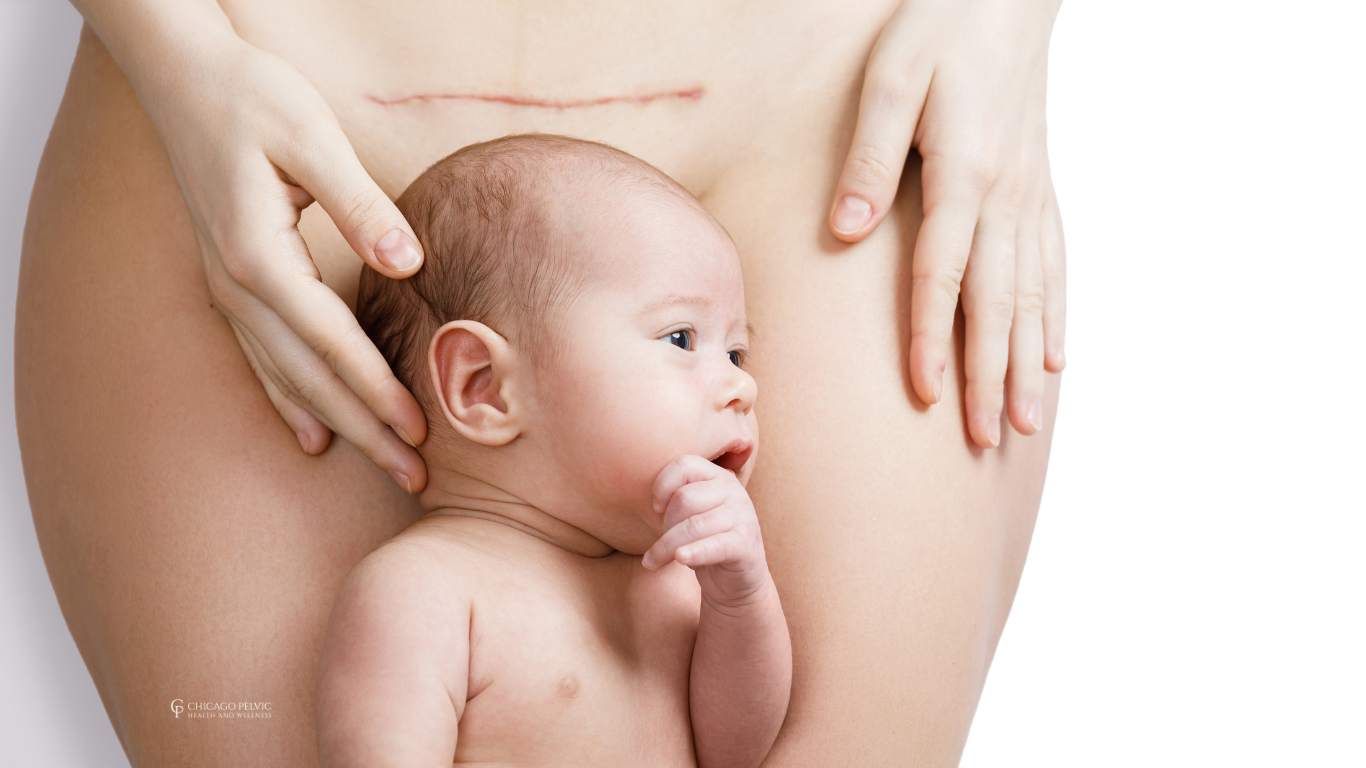Understanding Childbirth & How to Prevent Perineal Tearing
How Pelvic PT Can Prevent Perineal Tearing and Help with Postpartum Recovery
Did you know that up to 90% of women experience some form of tearing during vaginal childbirth? Now this might sound scary, but there are plenty of things you can do to help reduce this risk of perineal tears. Pelvic Physical Therapy (Pelvic PT) can play a huge role in preparing your body for childbirth, reducing the risk of tearing, and helping in a smoother postpartum recovery. In this blog, we'll touch on the different types of tears that may occur during childbirth and how Pelvic PT can really make a positive impact on your birth experience.
Understanding Childbirth Tearing and Why Pelvic PT Matters
Childbirth is a beautiful and exciting experience in life. On the flip side, that also commonly pairs with some apprehension and uneasiness with some not so fun birth outcomes such as perineal tearing. Tearing can lead to discomfort, and other pelvic floor issues such as bladder urgency, pelvic organ prolapse, or constipation. Pelvic PT helps to prepare the pelvic floor muscles by improving both flexibility and muscle control. By integrating Pelvic PT into your prenatal care, you can take proactive steps to minimize tearing risks and feel more confident during labor.
Common Types of Tearing During Vaginal Birth
Let's dive into the various types of tearing that can occur during vaginal delivery:
1. Perineal Tearing
Perineal tears are the most common, occurring in perineum, which is the area between the vaginal opening and the anus. They are classified into four degrees:
First-degree tears involve only the skin and superficial tissues.
Second-degree tears extend into the pelvic floor muscles.
Third-degree tears include the pelvic floor muscles and reach the anal sphincter muscles.
Fourth-degree tears involve a complete tear of all the pelvic floor muscles into the rectal lining.
Perineal Tearing
The image illustrates the four degrees of perineal tears that can occur during childbirth, ranging from superficial skin tears to severe tears involving the anal sphincter and rectum.
2. Urethral and Clitoral Tearing
Urethral and clitoral tears occur around the urethra and clitoris, areas that can be particularly sensitive. These tears can cause discomfort during urination and sexual activity.
3. Labial Tearing
Labial tears affect the folds of skin surrounding the vaginal opening.
4. Vaginal Wall and Sulcus Tearing
These deeper tears can lead to significant discomfort.
5. Episiotomy
An episiotomy is a surgical cut made in the perineum.
How Pelvic PT Helps in Preventing Tearing
Pelvic Physical Therapy helps prepare the pelvic floor muscles and the body for childbirth. Here are a few ways that a pelvic PT can help with reducing perineal tears:
Teaches Proper Pushing Techniques: Pelvic PTs can help teach you how to actively lengthen your pelvic floor which is very important during the pushing phase. Learning how to push effectively not only reduces the length of time in labor, but also unnecessary strain on the perineum.
Helps with Body Awareness: Pelvic PT can also help with pelvic floor control and overall body awareness. Once again this is essential with pushing techniques especially in instances with an epidural. By training yourself to be more attuned to your body, and develop a muscle memory with pushing, this gives you more control when you might not physically have as much sensation to feel.
Improves Muscle Strength and Endurance: Muscle strength is important for holding various labor positions. They can help provide exercises to help train your endurance for labor and birth.
Promotes Flexibility: Flexibility in the hips and in the pelvic floor is very important for reducing perineal tears. The more flexible these muscles are, the more the pelvic floor muscles can better accommodate the stretching required during childbirth. Fun fact, the pelvic floor stretches 3x its natural resting length during childbirth.
Teaches Relaxation Techniques: Relaxed muscles are less likely to tear. Pelvic PT teaches breathing and relaxation exercises to help reduce overall tension as well as tension in the pelvic floor.
Labor Positions: Pelvic PT can teach you different laboring positions that feel most comfortable for you body and that help to keep an intact perineum.
Factors Contributing to Tearing and How Pelvic PT Mitigates Them
Several factors increase the likelihood of tearing, but Pelvic PT can help counteract these:
First-time Vaginal Birth: Pelvic PT prepares first-time mothers by teaching them to lengthen and control the pelvic floor muscles, as well as teaching labor positions that promote minimal tearing.
Instrumental Delivery: Pelvic PTs can help with fetal positioning, which can reduce the need for instruments like forceps or vacuum.
Large Baby Size: Techniques like perineal massage and promoting flexibility in the pelvic muscles helps to accommodate larger babies more easily.
Prolonged Labor: Pelvic PT can improve overall endurance and teach proper pushing techniques, potentially shortening labor duration.
Epidural Anesthesia: By practicing muscle control before labor, you can maintain better pushing techniques even with reduced sensation.
10 Ways Pelvic PT Promotes Optimal Fetal Positioning and Reduces Tearing
Pelvic PT doesn't just prepare your muscles; it also helps with optimal fetal positioning, which is crucial for a smoother delivery. Here are ten ways Pelvic PT contributes:
Addressing Muscle Imbalances
Pelvic PTs can address muscle imbalances around the pelvis, abdomen, or hips. Addressing these muscle imbalances can influence fetal positioning because it allows more room for the fetus to move in the abdomen to help with positioning.
Reducing Pelvic Floor Muscle Tightness
If pelvic floor muscles are restricted or tight on one side, this can influence how the baby engages with the pelvis. Ensuring equal muscle tone in the pelvic floor muscles, can make it easier for the baby to pass through the birth canal.
Breathing Techniques
Learning proper breathing helps manage pain and also helps with pelvic floor muscle lengthening during labor.
Perineal Massage Education
Pelvic PTs teach you how to perform perineal massage safely, which can increase perineal tissue flexibility to reduce tears.
Postural Alignment
Correcting posture not only helps with reducing muscle imbalances in the body, but also helps with allowing the baby to settle into the ideal position.
Manual Therapy
Soft tissue work to the hips, pelvic floor, low back, or abdomen can help to reduce asymmetrical tugging and thus create more space in the pelvis.
Movement Strategies
Pelvic PTs guide you on optimal positions and movements during labor to reduce risk of tearing and promote efficient delivery.
Education on Body Mechanics
Understanding how your body works during childbirth empowers you to make movements that minimize tearing risks.
Stress Reduction Techniques
Lower stress levels lead to less muscle tension, which can reduce the likelihood of tearing.
Coordination with Healthcare Team
Pelvic PTs work alongside your healthcare providers to ensure a comprehensive approach to your birthing plan.
Pelvic PT for Postpartum Recovery
If tearing does occur, Pelvic PT is instrumental in recovery:
Scar Tissue Management: Manual techniques can help to reduce scar tissue, reduce pain, and improve common symptoms like pain with sex, bladder urgency, or constipation.
Restoring Pelvic Floor Muscle Function: Exercises that involve coordination of the pelvic floor and surrounding muscles help to not only to regain strength and control but also reduces symptoms incontinence or prolapse.
Pain Reduction: Manual techniques, and guided exercises or positions can greatly help with alleviate discomfort .
Emotional Support: Pelvic PTs not only help with the physical aspect, but the entire psychosocial emotional aspects of postpartum recovery.
Empowering Your Birth Experience with Pelvic PT
Incorporating Pelvic PT into your prenatal care empowers you to take control of your birthing experience. By preparing your body physically and mentally, you reduce the risk of tearing and streamline your postpartum recovery. Pelvic PT provides you with tools, knowledge, and support, making your pregnancy and childbirth journey a more positive and less daunting experience.
Conclusion
While tearing during childbirth is a common concern, integrating Pelvic Physical Therapy into your prenatal care provides a proactive option. Pelvic PT not only prepares your body to minimize the risk of tearing but also equips you with techniques to allow a smoother labor and faster recovery.
Take the first step towards a confident childbirth journey. Schedule an appointment with our specialized Pelvic PT team to personalize your prenatal care. We're dedicated to supporting you through every stage of pregnancy and beyond.
Embrace your childbirth experience with strength, knowledge, and peace of mind.
Written by:
Dr. Jana Richardson, PT, DPT, WCS, PRPC, CIDN
Dual Board Certified Pelvic Floor Therapist and Owner of Chicago Pelvic Health
Dr. Jana Richardson is a highly accomplished pelvic floor therapist with dual board certifications and extensive experience in treating complex pelvic floor dysfunctions. As the owner of Chicago Pelvic Health, Dr. Richardson is dedicated to providing personalized and effective care for her patients. With a Doctorate in Physical Therapy, and specialized certifications in Women’s Health and Pelvic Rehabilitation, Dr. Richardson is a leading expert in her field. She is also certified in Integrative Dry Needling, further enhancing her ability to offer comprehensive treatment plans. Dr. Richardson’s commitment to patient-centered care and her passion for helping individuals achieve optimal pelvic health make her an invaluable asset to the community.









Worried about tearing during childbirth? Learn how Pelvic Physical Therapy can help prepare your body for labor, reduce the risk of tearing, and aid in faster recovery. Empower yourself with expert-backed strategies for a safer, more comfortable birth experience.